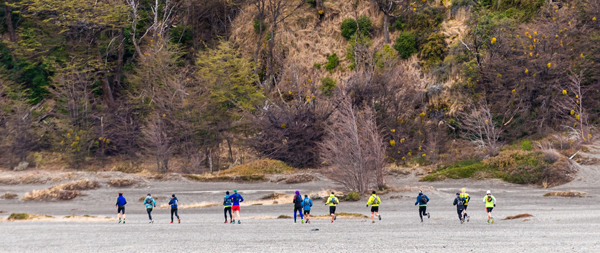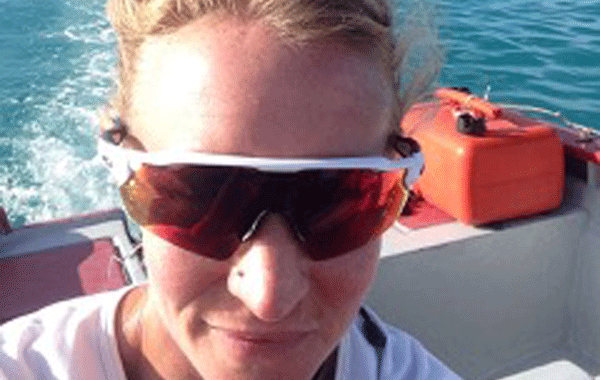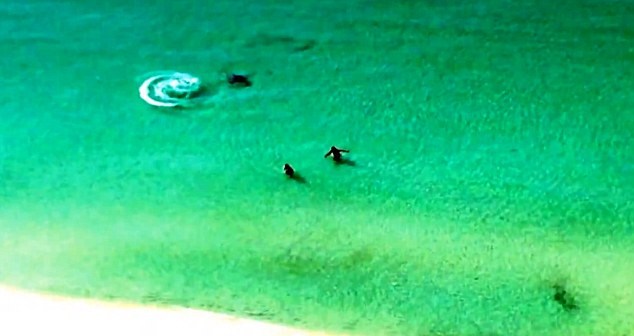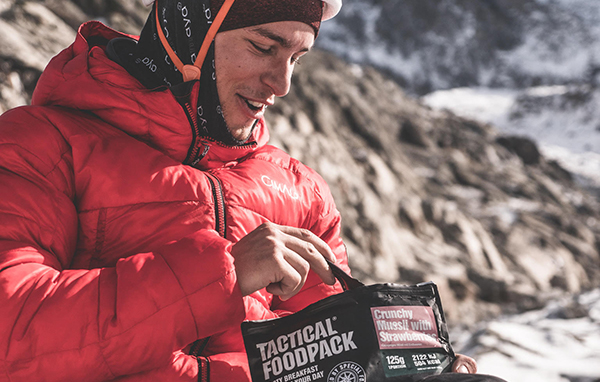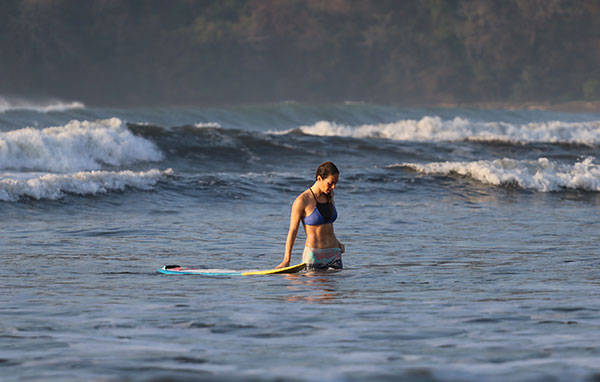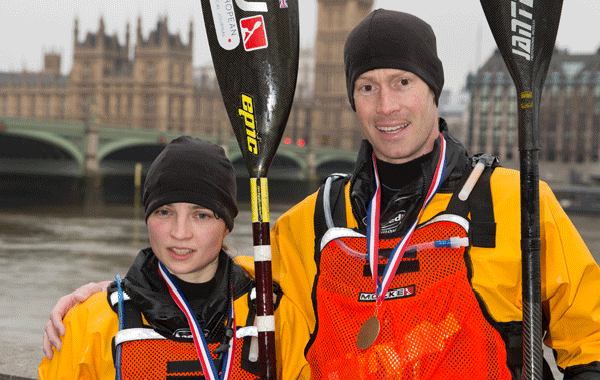
Lizzie Broughton and Keith Moule at Westminster Steps. photo Dominic James www.dominic-james.com
The DEVIZES to Westminster International Canoe Marathon is a marathon canoe race held every Easter in England. It is a race held over 125 miles from Devizes in Wiltshire to Westminster in central London.
Having first taken place in 1948 the race starts at Devizes Wharf with the route then following the Kennet and Avon Canal for 54 miles to Reading, where it joins the Thames. Another 54 miles later it reaches Teddington Lock and ends 17 miles later at Westminster Bridge.
In recent years Olympic rowers including Sir Steve Redgrave and James Cracknell have taken part in the race adding to its attraction for the thousands of crowds who gather along the route each year.
How long has the race been running and could you tell us a little about its history?
The first Devizes to Westminster Race was held in 1948. Well that’s the official starting date. But there’s a little more to it.
The tentative paddle strokes of the race were first made in 1920 in The Greyhound pub in the village of Pewsey, just outside Devizes. A national rail and bus strike was looming. Alternative means of transport were discussed in the bar, and the outcome, as with all good bar-room talk, was a wager: whether or not it was possible to get down the River Avon from Pewsey to the sea at Christchurch in under three days, a distance of some 70 miles. Four intrepid souls took up the challenge in a 20-foot sculling skiff and duly won the bet with 10 hours to spare.
Then in 1946 a conversation took place in the same pub with one of the original participants. Three RAF men and a local farmer took up the challenge, reaching the sea in a time of 51 hours. A local resident then offered a prize to anyone who could better this time, and the scoutmaster of the 1st Devizes Scouts, Ollie Brown, wanted his scouts to take up the challenge in their home-built canoes, but as the prize was specified for sculling boats and local residents only, they were unable to do so.
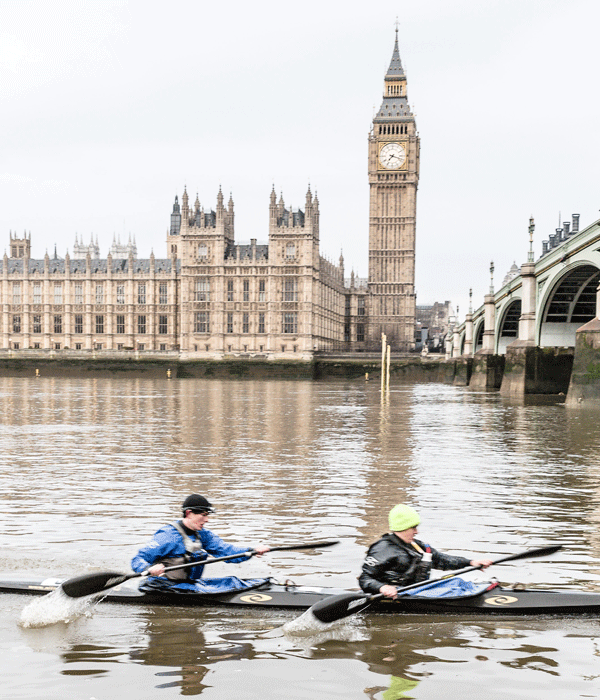
Crossing the finish line at Westminster. photo Dominic James www.dominic-james.com
In 1947 one of the original Avon descent participants, Roy Cooke, was planning to try to reach London via the derelict Kennet and Avon Canal and the River Thames in less than 100 hours. He was unable to see this through, and the project was taken up by the Devizes Scouts, with the encouragement of locals who put up a sum of money for Scout funds if they could succeed in “taking a boat from Devizes to Westminster in under 100 hours, all food and camping kit to be carried in the boats”.
At Easter 1948, Peter Brown, Brian Walters, Laurie Jones and Brian Smith, all aged just 17, set out on the first DW run. Great interest was generated nationally, with progress reports and photographs appearing in the national press, and the local cinema in Devizes interrupting programmes to give reports of their progress. At the finish a large crowd turned out at Westminster Bridge to see them successfully complete the challenge in a time of 89 hours and 50 minutes. Later that year several crews tried to make the run, but were defeated by thick weed on the canal. So it was established then that Easter was the best time to run DW.
The following year, 1949, despite no formal race having been organised, nearly 20 boats set out from Devizes to attempt the run. Most failed, including Percy Blandford making the first attempt in a single. Two crews from Richmond Canoe Club brought the time down to 49 hours 32 minutes. The interest shown in the event prompted Frank Luzmore, a member of the Richmond crews, to run an annual contest.
In recent years we’ve had a few recognised names take on the race including Olympic rowers Sir Steve Redgrave, James Cracknell, Ben Hart-Davies and Guin Davies, explorer Sir Ranulph Fiennes and TV’s Presenter Steve Backshall.
It’s a brave name that takes on DW. While all enjoy the challenge, DW has no respect for names.
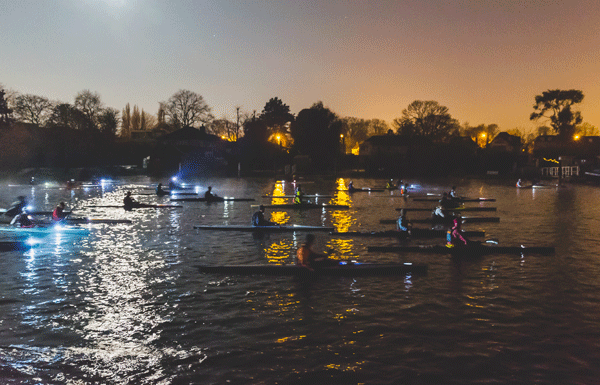
Dusk start at Teddington. photo Dominic James www.dominic-james.com
How can teams enter the race and what are the requirements?
Entry is open to all, which is one of the appeals of the event. Club kayakers line up alongside multi-medalling Olympians sharing the simple goal of completing the 125 mile course. If you want to enter, just fill in the form. Before you go on the water, umpires scrutineer your boat and equipment for safety and off you go.
There are actually five classes of entry. The Senior Doubles is the main event; a non-stop race from Devizes to Westminster starting on Easter Saturday finishing on the following day. Crews don’t stop to rest, eat or drink. Everything is done while moving down the course. It’s a logistical challenge requiring a good support crew. It is a complete test of physical and mental endurance.
The four remaining classes split the course over stages across four days starting out on Good Friday. Racing classes include Senior Singles, Junior Doubles for people 15-18 years and Junior Veteran Doubles. Endeavour is a non-timed touring class, providing a good introduction to the course and a perfect foundation for crews looking to take on the non-stop Senior Doubles.
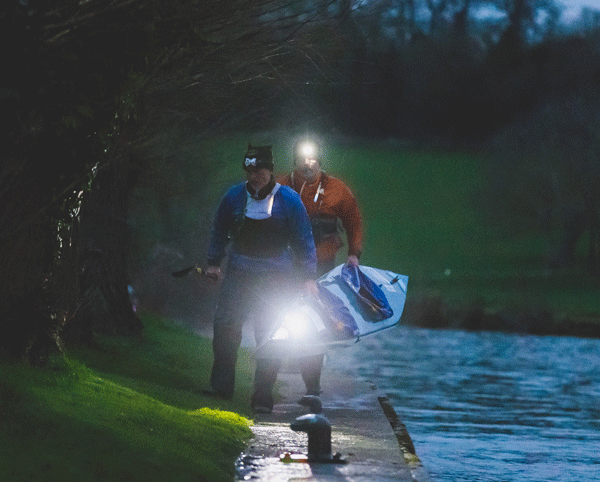
Portaging Shiplake at Dusk. photo Dominic James www.dominic-james.com
Whatever class you enter, many a novice has assumed DW is a pretty easy endurance challenge. Those first impressions are quickly smashed after a couple of training sessions. It’s around 90,000 strokes to complete the course. With the race over Easter weekend, the weather deals up anything from spring sunshine through to wintery showers and, perhaps, everything in between.
To add to the challenge, there are 77 locks to carry – or portage – you boat round. The first couple are easy enough, but the arms quickly struggle, and the boat collects water magnifying the aches and pains.
There’s also the strategic challenge of scheduling your arrival at Teddington – where the River Thames becomes tidal – so you can use the outgoing tide to assist your journey down to Westminster. Get any of this wrong and you could be in the water.
Get it right and a smooth running boat, powered by carefully honed technique, will cut through the water carrying you on your way to central London. It’ll still be painful, uncomfortably so at times, but one of the most rewarding endurance events on offer.
So, naturally, you’d be wise to prepare very carefully as with any endurance event. A minimum of six months working on technique, fitness, working with your partner and testing your equipment is recommended.
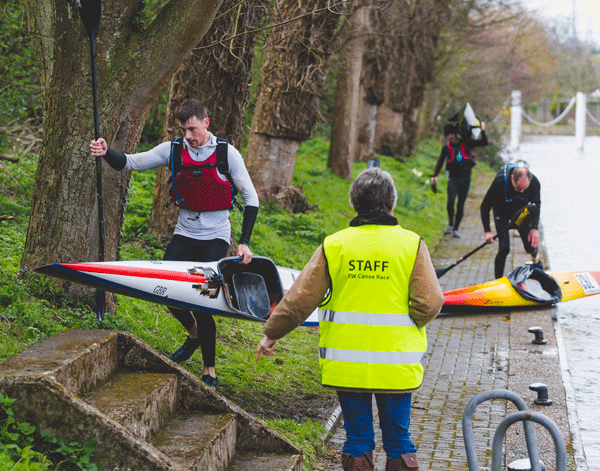
Tom Sharpe keeping up the pressure at Shepperton Lock. photo Dominic James www.dominic-james.com
Which charities will benefit from this year’s race and which have benefited in the past?
The official charity of DW2016 is the Hypermobility Syndromes Association, in support of a one-time kayaker who has since volunteered to help with the race for many years who is suffering from the hypermobility condition Ehlers Danos Syndrome.
Previously we’ve worked with the Kennet & Avon Canal Trust, The Royal British Legion, Marie Curie Trust and the Canoe Federation.
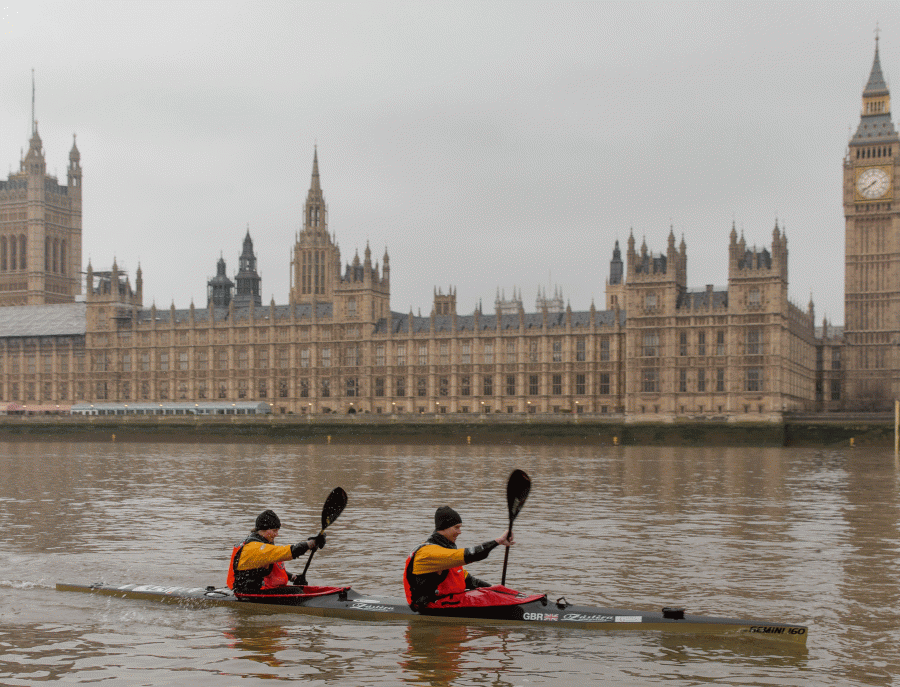
Lizzie Broughton and Keith Moule crossing the line at Westminster. photo www.olypics.org.uk
How can those who don’t want to race get involved and help as volunteers?
We have up to 400 volunteers give their time throughout the year and over Easter Weekend. Roles cover communications, marshalling, time-keeping, first aid, administration and planning roles. We have roles all the way along the course from setting up and de-rigging the start at Devizes, along the course and at the finish in Westminster where we have a full village set up with food and showers.
Volunteering is a great way of being involved with the race and you get to work with some great people. It’s also a great way of understanding more about the race if you’re thinking of entering. Visit DW Volunteers for more information.
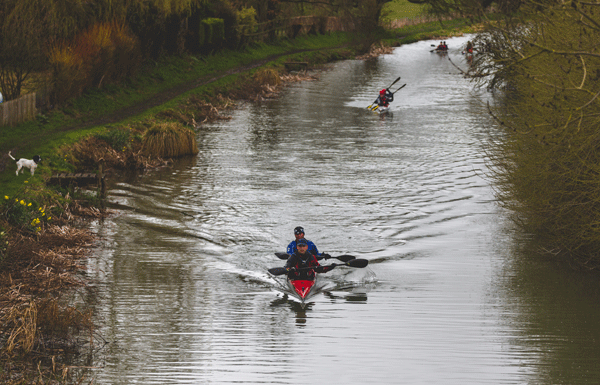
Junior Double crews working down the canal. photo Dominic James www.dominic-james.com
Tell us about the remarkable story behind last year’s winners?
DW2015 was the first time in the 68-year history of the race that a mixed crew has one the Senior Doubles. The crew of Lizzie Broughton and Keith Moule finished in a time of 16 hours 40 minutes and 31 seconds.
The time was the second fastest winning time this century and 80 minutes faster than the second placed team of Tom Diaper and James King. Broughton and Mould finished first through a combination of ability, detailed planning, hard work and application. They’re both members of Team GB Kayak Marathon Team. Broughton is the current World and European Silver medallist in Senior Women’s K1 (single kayak).
DW Organisers were delighted a mixed crew won the event. Women entries – either as mixed or all female crews – have risen to around around a fifth of the field. After years of pushing more females to take part, it’s great to see a mixed crew win the main event. Hopefully this will inspire other to take part.
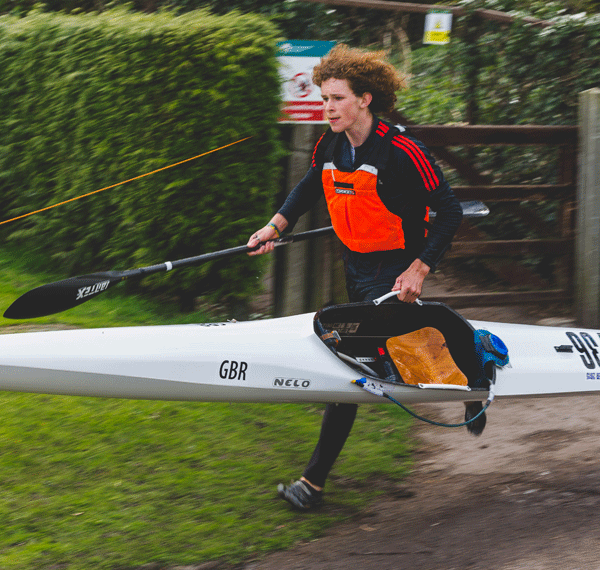
Sam Plummer on a speedy running portage at Shepperton Lock. photo Dominic James www.dominic-james.com
Is there anything special planned for this year’s event and do you ever see the format of the race and festivities surrounding it changing in the future?
Recently we’ve introduced GPS Tracking for the Senior Doubles non-stop race, a great innovation that allows friends and family to watch the race and crews anywhere in the world as long as they have access to an Internet connection.
No great innovations this year, but we always look to improve the running of the race.
One interesting coincidence this year is that the Senior Doubles race and the University Boat Race are both on Easter Sunday. The boats won’t clash, but it does raise the interesting contrast of two endurance water sport events with a great tradition and heritage both being on the tideway within hours of each other.
We’re always open to exploring suggestions for changing the race, while respecting the tradition of the race. We are keen to promote racing – the course record of 15 hours 34 minutes and 12 seconds was set in 1979. This must be one of the longest standing records in serious sporting events.
Fore more information visit www.dwrace.org.uk. DW2016 event dates, March 25-28. Senior doubles, March 26-27. Start: Devizes Wharf. Finish: Westminster Bridge.
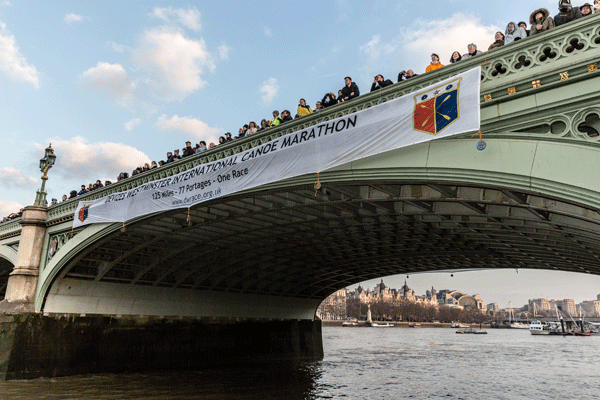
Supporters wait to cheer on the crews. photo Dominic James www.dominic-james.com


